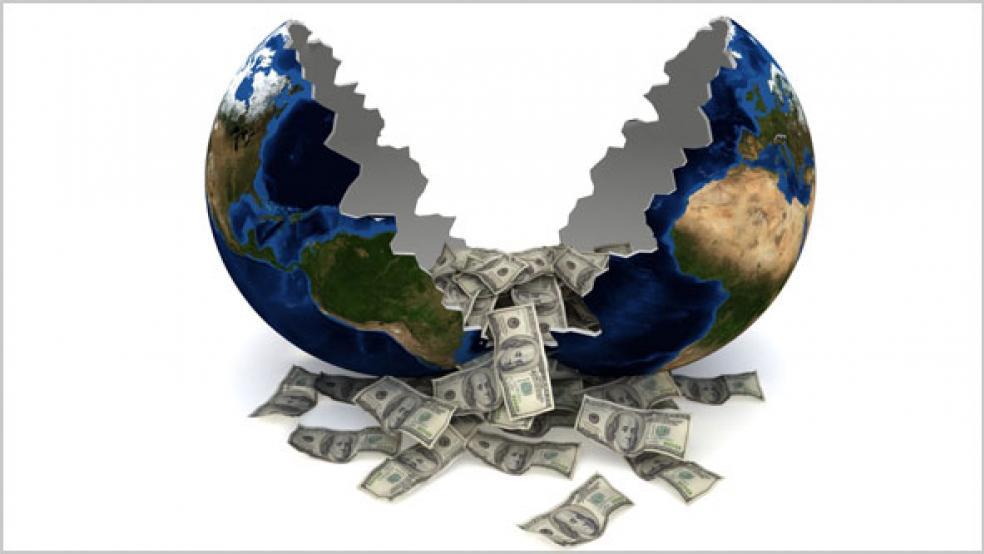Authored by MN Gordon via EconomicPrism.com,
Sometime in the fall of 2018 a lowly gofer at the New York Stock Exchange was sweating bullets. He’d made an honest mistake. One that could forever tag him a buffoon.
After trading sideways for most of the spring, the Dow Jones Industrial Average was on the move. When it closed at 26,828 on October 3, it appeared the Dow was but one trading day away from eclipsing 27,000. Everyone, including Jim Cramer, just knew it was about to happen.
And this was precisely what the NYSE gofer feared most. For he’d failed to procure Dow 27,000 hats. What a shame it would be for Wall Street’s most revered index to notch this historic milestone with no commemorative hats for floor traders to put on while they go bananas.
But then a miracle happen. The Dow didn’t go up; rather, it went down. A week later, to the gofers relief, the Dow 27,000 hats arrived…in advance of Dow 27,000.
And now, nearly eight months later, Dow 27,000 remains elusive. After pulling back in October of last year, the Dow made another run at it last month. But, again, fell short. Hence, the hats remain stowed away in a box in the back of a broom closet.
By our estimation, that’s where the Dow 27,000 hats will stay until about 2050 – or even later. Moreover, when it’s finally time to pull them out, we suspect Wall Street cheerleading will have long since gone out of style. What a waste of perfectly good hats.
But fear not. All’s not lost…
Another Day in Paradise
By all commonly accepted weights and measures we’re living in paradise. Our federal government’s broke. Our state and local governments are crazy as ever. Yet things still work wonderfully well.
When we turn on the faucet, water reliably flows out. We take hot showers every day. There’s no sewage flowing down the streets as far as we can tell. The trash man shows up to collect our garbage every Tuesday rain-or-shine. And vagrants generally stay off our lawn.
Within a short walk from our residence are four different grocers. The shelves are always full. The produce is always fresh. And the cost for most items is exceptionally reasonably. This week, for example, we picked up several ears of fresh corn for just $0.33 cents a pop…practically free.
On top of all this, we have an abundance of meaningful and challenging work. The pay’s generally acceptable. And while we do receive a client wire brushing on occasion, corporate executives leave us alone…so long as we’re winning new business and delivering margin at or above plan.
Plus, the coffee’s free. And it’s all you can drink!
Should we expect anything more?
What about Dow 27,000? Would it somehow increase our bliss?
Would it make our morning cup of house blend taste better? Would it make our back hurt any less after a long day? Would it make the air crisper? Would it make sunsets more vibrant?
Of course not. For these questions, Dow 27,000 is meaningless.
Still, it’s not without meaning. We seem to think the same factors inhibiting Dow 27,000 are the same factors that will make life less agreeable over the next several decades. Here’s what we mean…
The Ugly End of Globalization
The capital defect of America’s contrived economy is the capital itself. Namely, it’s fake. The importance of this defect cannot be overstated.
After Nixon removed the discipline of gold from the world monetary system the money supply could be inflated without limits. For U.S. consumers, this translated into consumer price inflation. Things got ugly quick.
By 1980, the CPI was at 13.5 percent and the yield on the 30 Year Treasury hit 15 percent. Fed Chairman Paul Volcker had to jack the federal funds rate up over 20 percent to keep prices from coming completely uncorked. Indeed, things got ugly.
About this time, something even more historic happened. Roughly one billion Chinese workers, who were willing to work for less than peanuts, joined the global workforce. As a result, the U.S. was able to export its inflation – and jobs – to China and other emerging economies over the next three decades.
At the same time, the prices of goods and services that couldn’t be exported – like health care and college tuition – inflated with the money supply. In addition, the gap from stagnant U.S. wages, due to the flood of cheap labor abroad, was made up with an endless supply of credit. Financial assets, like stocks, bonds, and real estate, also inflated beyond comprehension.
At the end of the cycle, however, the Dow came up short of 27,000. Massive public and private debts, runaway deficits, trade tariffs, and the end of globalization have set the table for the return of consumer price inflation to the U.S economy.
Make what you want of Trump’s trade policies. You may like them. You may not. But there’s little he or anyone else can do to stop the ugliness that’s coming.
via ZeroHedge News http://bit.ly/2WhSbfa Tyler Durden
